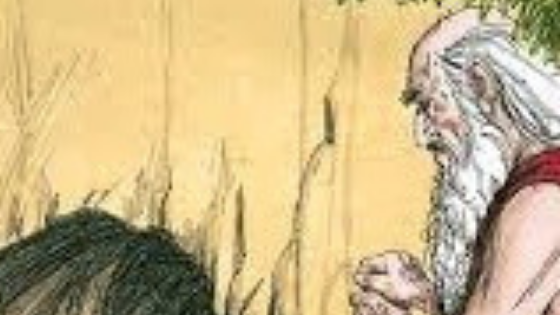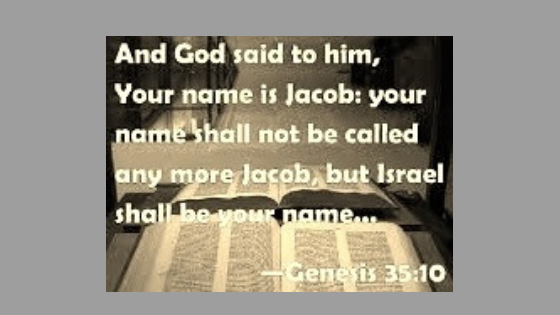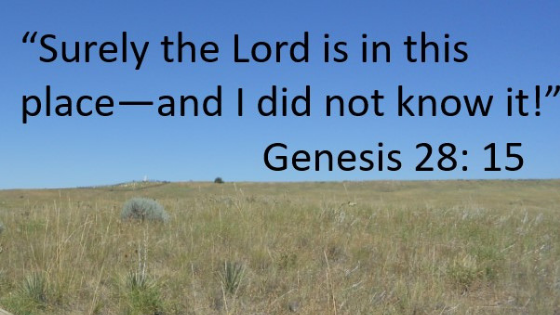Shabbat Table Talk
Parashat Chayai Sarah – Erev Shabbat 2 November 2018
Week of 28 October – 3 November 2018
Torah portion: Gen. 23:1-25:18 Haftarah: 1 Kings 1:1-31
Download
 We begin this portion with the death of Sarah, the first Matriarch, despite the fact that Chayai Sarah means the “life of Sarah”. Sarah is said to have died at 127 years of natural causes. In the Midrash, her death seems to follow the near sacrifice (akedah) of her only son, Isaac, by her husband Abraham… She was grief stricken. Sarah believes that the sacrifice of Isaac is wrong and she doesn’t believe that G-d would command such an act. She values and sees that loving relationships are the ultimate test of morality, faith and the G-d of the Covenant. Sarah may be seen here as the greater hero to her husband who is willing to sacrifice his only son in obedience to divine command. (Shapiro, 71) How could he obey a G-d calling for human sacrifice? Carol Gillian, psychologist, has spoken of the difference between men and women in that women often define themselves in the context of human relationships. They are “nurturer, caretaker, help mate, weaver of networks for men.” Men too often devalue that care. (Shapiro, 72) Abraham appears unsatisfied with his normal life and seeks a higher truth and meaning. He is the “star gazer” in scripture but often fails in looking for justice in his own home. (Perhaps this understanding comes later as the prophet Hosea says “it is mercy I desire and not sacrifices.” (6:6).
We begin this portion with the death of Sarah, the first Matriarch, despite the fact that Chayai Sarah means the “life of Sarah”. Sarah is said to have died at 127 years of natural causes. In the Midrash, her death seems to follow the near sacrifice (akedah) of her only son, Isaac, by her husband Abraham… She was grief stricken. Sarah believes that the sacrifice of Isaac is wrong and she doesn’t believe that G-d would command such an act. She values and sees that loving relationships are the ultimate test of morality, faith and the G-d of the Covenant. Sarah may be seen here as the greater hero to her husband who is willing to sacrifice his only son in obedience to divine command. (Shapiro, 71) How could he obey a G-d calling for human sacrifice? Carol Gillian, psychologist, has spoken of the difference between men and women in that women often define themselves in the context of human relationships. They are “nurturer, caretaker, help mate, weaver of networks for men.” Men too often devalue that care. (Shapiro, 72) Abraham appears unsatisfied with his normal life and seeks a higher truth and meaning. He is the “star gazer” in scripture but often fails in looking for justice in his own home. (Perhaps this understanding comes later as the prophet Hosea says “it is mercy I desire and not sacrifices.” (6:6).
After Sarah’s death, Abraham secures a plot from the Canaanites to bury her in the land of Hebron. He marries again and fathers more children. Genesis 25:7 gives the length of his life as 175 years. With the death of Sarah, Abraham somehow finds himself understanding her value on relationships that are lasting and meaningful in responding to G-d. He finds that his vision of life is now more humble, real, human. He finds this reality with his family and his concern in finding a good wife for his son, Isaac. His care of his children and his daily life become a holy life without seeking past memories of “mountaintop talks” with G-d. He recognizes Sarah’s wisdom, truth, and the value of the long life he and Sarah shared together. Her life was a blessing indeed. The passage from Genesis continues this theme of relationships as it speaks of Sarah’s burial and aged Abraham looking for a secure future for his family with finding a wife for Isaac.
In the Kings reading we find the aged King David also seeking to secure his future heir after his 40 year reign with keeping a promise he made to Bathsheba to name her son, Solomon as his successor. Even the prophet Nathan encouraged him to keep this promise despite the fact that his son Adonijah wanted to be the next King. Solomon indeed becomes king and orders his brother’s execution (so much for relationships here!). David’s life is said to have been 70 years following the Psalmist: “The span of our life is 70 years.” (Ps. 90:10 – 3 score and 10). Whatever the actual length of days of these early ancestors, they pave the way for recognizing that the Covenant made to Abraham and Sarah continues on despite the struggles, pains, sorrows and joys of learning to live together as G-d’s imperfect and yet loved people. That promise lives on to the present day.
For Reflection and Discussion: 1. When you look closely at the ancestors and their stories, do you find connections with the realities we face today? In what ways are we “the same”? Or “different”? 2. With the newly canonized saints of the Church, we are called to see that throughout history in every generation, G-d summons followers to hear the Word and keep it. No matter the length of our days, we are each called to live our truth in faith as we understand it. How does the life of Sarah and those who follow, inspire us or give us insights into our present relationships and connections to our sisters and brothers around the world?
Bibliography: Shapiro The Women’s Torah Commentary – Vermont, 2000; Leibowitz New Studies in Bereshit (Genesis) – Israel; Fox The Five Books of Moses – New York, 1995; Plaut The Haftarah Commentary, New York, 1996
This week’s teaching commentary was prepared by
Mary Louise Chesley-Cora, M.A.T. Religious Studies, Hockessin DE USA, BK alum 2001
Email: chezcor@msn.com
[Copyright © 2018]
…………………………………………………………
PLEASE NOTE: The weekly Parashah commentaries represent the research and creative thought of their authors, and are meant to stimulate deeper thinking about the meaning of the Scriptures. While they draw upon the study methods and sources employed by the Bat Kol Institute, the views and conclusions expressed in these commentaries are solely those of their authors, and do not necessarily represent the views of Bat Kol. The commentaries, along with all materials published on the Bat Kol website, are copyrighted by the writers, and are made available for personal and group study, and local church purposes. Permission needed for other purposes. Questions, comments and feedback are always welcome.
………………………………………………….
~~1983-2018~~
Bat Kol Institute, Jerusalem
“Christians Studying the Bible within its Jewish milieu, using Jewish Sources.”
Website: www.batkol.info; Parashah Admin: gill@batkol.info



